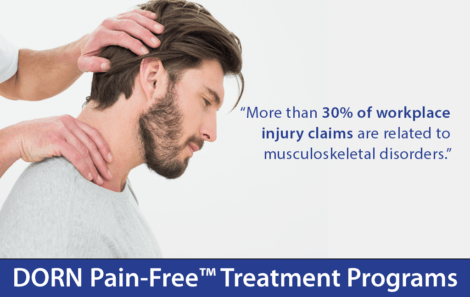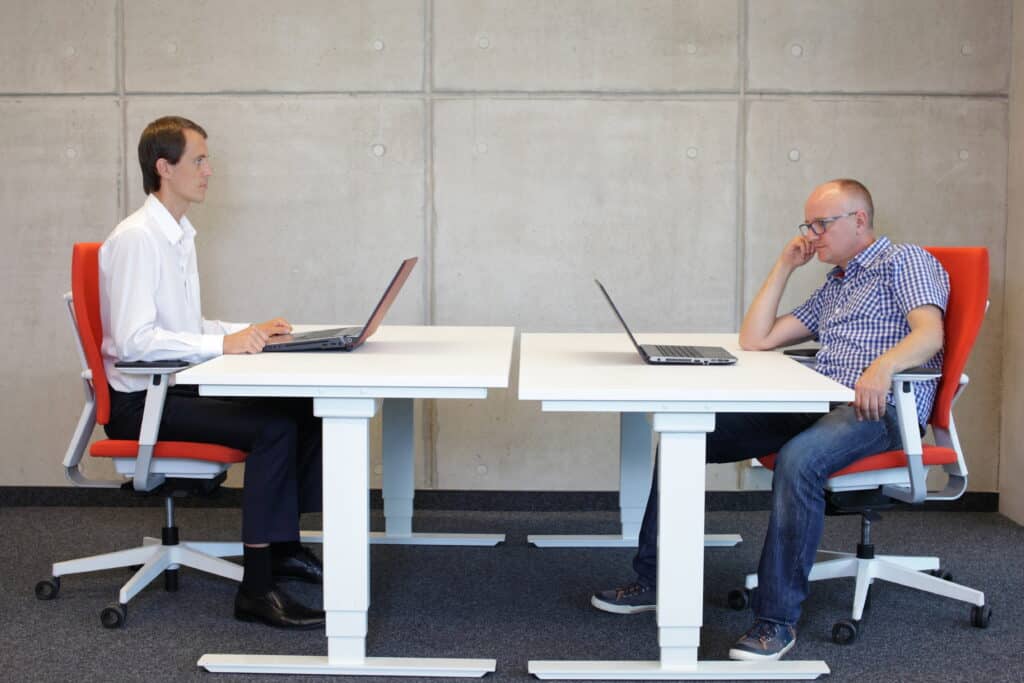
The workplace continues to evolve, but we now know more about the challenges that modern employers face than we ever have before. Research and data have provided invaluable insight into the risk factors inherent to the workplace, across a multitude of industries and work environments. That depth of understanding also implies a responsibility on the part of the employer to commit to a healthy, safe work environment.
Of course, the rewards are significant for employers as well. A recent report from Johnson & Johnson stated that the company saved over $250 million on health care costs after investing in workplace ergonomics, and almost tripled their return on investment. The data is especially favorable to an ergonomics approach, in which employers perform a workplace assessment to define the work environment’s effect on the health of its employees. Such a process can isolate risks while illuminating potential improvements that can lead to a happier and more productive workplace.
Conducting an ergonomic assessment is a foundational element of the ergonomics process.
Your ergonomics improvement efforts will never get off the ground without being able to effectively assess jobs in your workplace for musculoskeletal disorder (MSD) risk factors.
Systematically conducting ergonomic risk assessments gives you a clear view of the risk present in your workplace. This clear view of MSD risk factors will allow you to effectively communicate, prioritize, and implement workplace improvements. Because ergonomic assessments are the backbone of the ergonomics improvement process, it’s important to be effective and efficient as you observe and analyze your workplace.
The following steps, together with expertise and preparation, will ensure that your workplace ergonomic assessment is both effective and efficient.
Step 1: Establish a Common Ergonomic Assessment Method and Set of Tools
Every ergonomic assessment your organization conducts should use the same method and set of tools. Standardizing ergonomic assessments throughout the organization ensures an “apples to apples” comparison of MSD risk factors between jobs. Every ergonomics team member should be trained in conducting and properly documenting each assessment using the same set of assessment tools and documentation methods.
Without a standardized ergonomic assessment method in place, your team will struggle to identify and communicate MSD risk factors.
Don’t make this mistake. Instead, start your assessment off on the right foot by taking an organized approach.
Thankfully, employers are well equipped to tackle an assessment. Most assessments begin with a questionnaire given to workers, followed by detailed observation of each department. The assessor will evaluate the physical expectations of the workplace, as they pertain to individual workers and tasks. Also of benefit are photographs and video of specific job tasks. All of these will help standardize and record the information you receive through an evaluation, which will ultimately help you improve.
Step 2: Involve the “Workplace Athletes” Performing the Job

The individuals performing the job each and every day are uniquely qualified to help you assess the job. Think of them as athletes in the workplace: people who understand the necessary expertise and physical dexterity to execute their unique job responsibilities, and whose health is of paramount importance to the organization’s success. Involving them in the assessment process can generate helpful improvement ideas and can contribute to worker engagement early on. Workers are much more likely to adopt changes to their work environment down the road if you involve them early and often.
Observe the workplace athletes performing the job and ask them questions about their work. Gather opinions on what causes excessive fatigue and, and ask workers how they would improve their job if they could. This can be accomplished by including workstation analysis in your ergonomic assessment plan. A workstation assessment can provide detailed information that will help you eliminate stress factors and promote a healthy work environment.
Are there any heavy or strenuous lifting/lowering tasks in the job? Do the hand tools they use have an awkward grip? Is the height of the work comfortable for them? Do they experience fatigue and discomfort doing the job? These are just a few of the questions you can ask to get the conversation about the job going. Take detailed notes during this subjective portion of the assessment, and supplement them with photographs and video so that you can review key tasks and motions more closely.
Step 3: Conduct the Objective Portion of the Assessment
Once you have collected subjective data of the job demands by observing and interviewing employees on the job, you should be able to generate a list of job tasks for the data-oriented part of the ergonomic risk assessment.
There are many ergonomic assessment tools freely available in the public domain you can use to evaluate job tasks:
• Lifting/lowering tasks: WISHA Lifting Calculator or NIOSH Lifting Equation
• Upper Body Posture: Rapid Upper Limb Assessment (RULA)
• Entire Body Posture: Rapid Entire Body Assessment (REBA)
• Pushing/pulling: Snook Tables
• Hand-Arm Vibration: HAV Calculator
• Screening tools: WISHA Caution Zone Checklist and WISHA Hazard Zone Checklist
By using a common set of tools and a standardized method for conducting assessments, you will ensure precise results from every assessment, and you’ll be prepared to analyze your findings and prioritize improvements.
Step 4: Assess your Data

Now that you have collected both subjective and objective data, it’s time to take a step back and assess what you’ve learned so far. Is there significant injury risk at this job? What is the level of risk? How can the risk be reduced?
Consider your findings against what we already know about workplace injury. The Bureau of Labor Statistics reported that more than 30% of workplace injury claims are related to musculoskeletal disorders (MSDs), and OSHA found that claims related to these this type of injury amount to nearly $20 billion nationwide per year on a direct cost basis alone. Add in the indirect cost, plus the cost of those who work in pain and never report it and the total cost of pain has been estimated to exceed $600 Billion. It’s more than reasonable to believe that MSDs are a significant factor in any workplace, and should draw particular attention during your assessment.
With a deeper understanding of the problem areas in your work environment, you’re ready to generate ideas for improvement that an ergonomics team can put into action.
Step 5: Create a Plan Moving Forward

Next, bring your subjective data, objective data, and overall assessment back to your ergonomics team to brainstorm additional solutions and improvement opportunities. Consulting with a multi-disciplinary ergonomics team will bring in a fresh perspective and deeper expertise to help solve problems. At this point, the team should be able to generate several improvement scenarios.
Among the most effective solutions for workplace safety improvement are continuous coaching and consulting services that include training programs, workplace monitoring, and even stretching instruction for employees. Focusing collectively on Body, Behavior and Environment creates sustainable organizational change versus just short-term gains. These solutions can also help you foster and maintain a positive, healthy workplace culture with happier employees and a stronger bottom line.
Conclusion
Identifying MSD risk factors at your worksite is just the beginning. The real work of your assessment lies at the employee level, in establishing relationships with your workers. An open, receptive environment will encourage employees to invest in their own safety and happiness, which in turn can cut costs for your organization and minimize workdays lost to injury.
The goal of this project should be systematic workplace improvements that impact the key safety, productivity, and quality metrics you track. Make sure you build these efforts on a solid foundation with effective and efficient ergonomic risk assessments.
DORN Companies has 7 Certified Industrial Ergonomic Evaluators on staff to support client ergonomic needs via site risk assessments, quantitative ergonomic evaluations, leading training and coaching programs as well as on-site monitoring and observation to reduce the risk of injury. Contact us to learn more: info@dorncompanies.com
Portions of this article were originally published by Occupational Health & Safety Online and written by Mark Middlesworth, MS, ATC/L, CEES. Mark is the founder of Ergonomics Plus, a company devoted to helping “workplace athletes” live healthy, productive lives and remain injury free. Mark originally wrote parts of this blog. For more information, visit http://ergo-plus.com. You can find the original article here: http://ohsonline.com/Blogs/The-OHS-Wire/2015/04/Conducting-Ergonomic-Assessment.aspx


